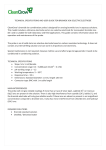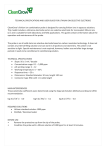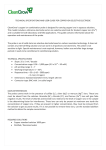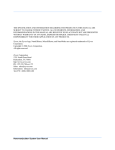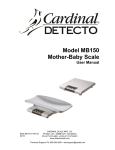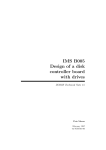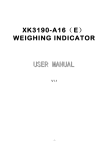Download TECHNICAL SPECIFICATIONS AND USER GUIDE
Transcript
TECHNICAL SPECIFICATIONS AND USER GUIDE FOR NITRITE ION SELECTIVE ELECTRODE CleanGrow’s nitrite ion combination probe is designed for sensing nitrite ions in aqueous solutions. This model includes a reference electrode and an ion selective electrode for monovalent nitrite ions (NO2-) and is suitable for both laboratory and field applications. This guide contains information about the operation and maintenance of the probe. The probe is an all solid state ion selective electrode based on carbon nanotube technology. It does not contain any internal filling solution and can work in all positions and stored dry. Special maintenance is not required, however, before use and after large storage periods it needs to be conditioned in conditioning solution. TECHNICAL SPECIFICATIONS Slope: 53 ± 6 mV/decade Concentration range: 0.5 – 1,000 ppm (1.1x10-5 – 0.02 M) Detection limit: 0.2 ppm (4 x 10-3 mM) pH working range: 4 – 8 Working temperature: 5 – 50°C Response time: < 20 s Dimensions: Standard diameter 11 mm, length 120 mm Connector type: BNC with 1 m cable length MAIN INTERFERENCES The Selectivity Constants are as follows: KNO2-,SCN- = 10-0.2, KNO2-,ClO4- = 10-2.4, KNO2-,I- = 10-2.2 and KNO2-,Br- = 10-3.2. These ions will only cause interference if present in significantly higher concentrations than nitrite ions. REQUIRED SOLUTIONS Nitrite standard solution Distilled / Deionised water BEFORE USE • Remove the protection cap from the tip of the probe. • Condition the probe with a nitrite solution of 1000 ppm for at least 10 minutes. MAINTENANCE AND STORAGE • Store in a cool, dry place. • Store and transport below 50°C • When finished measurements put back on the protection cap of the probe. Do not leave the probe uncapped for long periods of time. • Do not hit or scrape the tip of the probes. MEASURING HINTS • All samples and standards should be at the same temperature for precise measurement. • Calibration and measurements times must be similar. • Always rinse the probe with distilled water and dry between measurements. Use a clean, dry tissue to prevent cross-contamination or shake slightly the probe to remove remaining water drops. • Slightly shake the probe when immersed in solution to avoid air bubbles enclosed on the tip of the probe. CleanGrow Ltd., Unit 4, Euro Business Park, Little Island, Co. Cork, Ireland Tel: +353-21-4232000 E-mail: [email protected]


